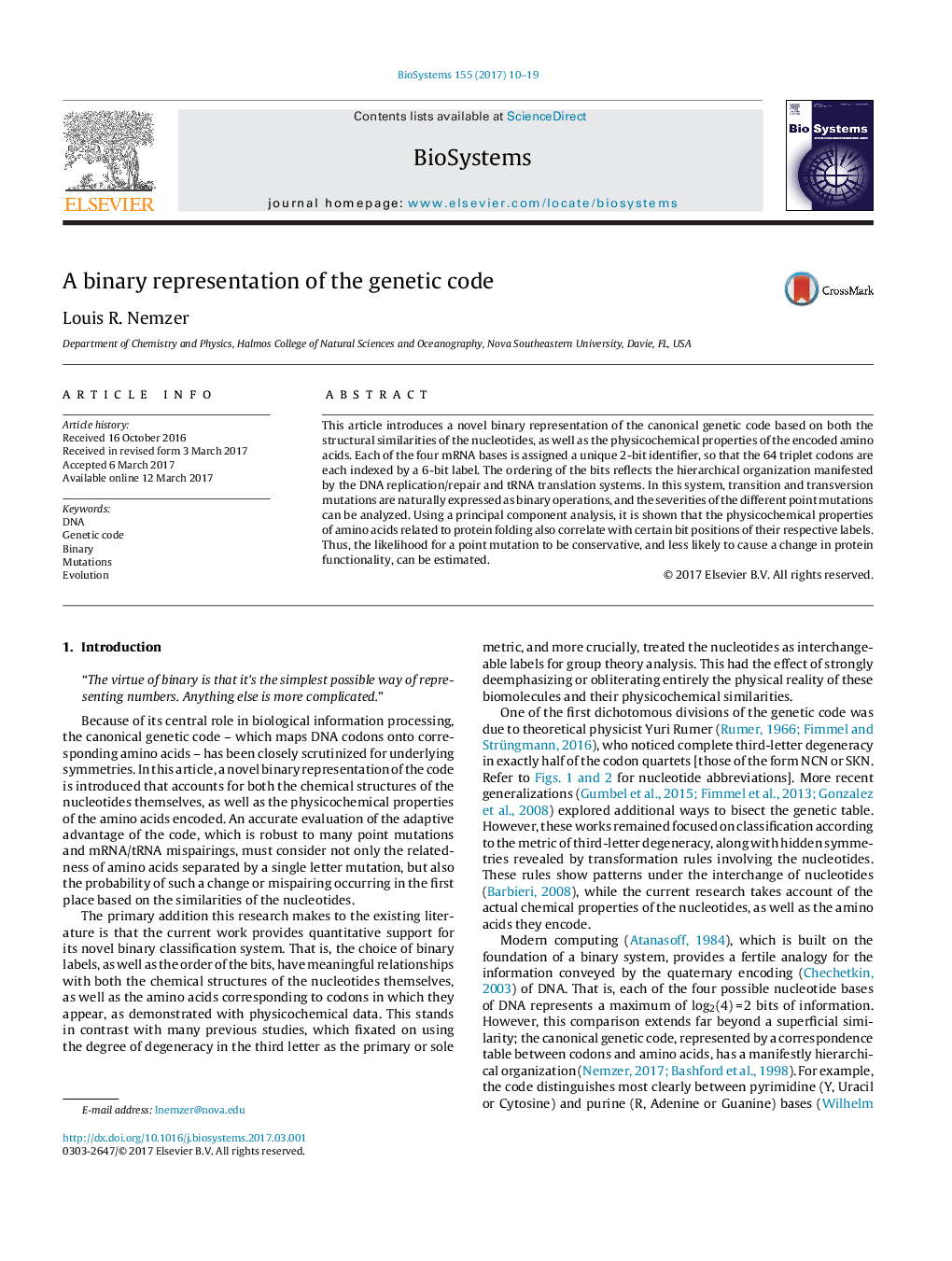| Article ID | Journal | Published Year | Pages | File Type |
|---|---|---|---|---|
| 5520647 | Biosystems | 2017 | 10 Pages |
â¢A new binary representation of the genetic code is introduced.â¢This method reflects relationships between nucleotide structures and the amino acids they code for.â¢Significant, quantitative correlations are revealed between particular bits and the properties of the encoded amino acids.â¢Mutations can be classified using Boolean operations.
This article introduces a novel binary representation of the canonical genetic code based on both the structural similarities of the nucleotides, as well as the physicochemical properties of the encoded amino acids. Each of the four mRNA bases is assigned a unique 2-bit identifier, so that the 64 triplet codons are each indexed by a 6-bit label. The ordering of the bits reflects the hierarchical organization manifested by the DNA replication/repair and tRNA translation systems. In this system, transition and transversion mutations are naturally expressed as binary operations, and the severities of the different point mutations can be analyzed. Using a principal component analysis, it is shown that the physicochemical properties of amino acids related to protein folding also correlate with certain bit positions of their respective labels. Thus, the likelihood for a point mutation to be conservative, and less likely to cause a change in protein functionality, can be estimated.
